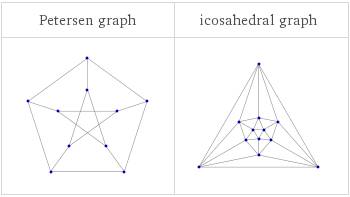Two things happened to me last week with regards to IBM/ILOG (a topic I have written about quite a bit):
- I was on a conference call with an ILOG person and I said, jokingly, “Is that XXX from ILOG, an IBM Company?”. His reply: “Nope, just XXX from IBM”. The “ILOG, an IBM Company” phrasing ended earlier this summer.
- I got an email from the PR people at ILOG (IBM, damn it, IBM!) saying in, essence, “Bluewashing for ILOG is complete”. “Bluewashing”? What the heck is that? A web search suggests something about agreeing with the United Nations to not use child labor, but somehow I can’t see poor third world children toiling over ever-more-complicated polyhedral facets.
So last Thursday, I had a conference call with a number of IBM/ILOG people. I don’t do many of these types of calls: as is obvious from the blog, I am not a journalist, and I tend to get so caught up with the conversation that I don’t take notes or otherwise be anything other than an interested academic. For instance, last spring, I had a wonderful private lunch with Pierre Haren (the CEO of ILOG turned Vice President at IBM). Great conversation resulted in notes like “Optimization, constraint programming, integration”… sigh…
Back to my call on Thursday. “Bluewashing” turns out to be the phrase that IBM uses to describe the process of turning a new acquisition into part of IBM. While the term sounds somewhat ominous, it seems much milder (anyone with an inside view to the contrary is welcome to comment!). Once IBM owns code, for instance, it must be bluewashed to meet IBM standards. If there is open source code included in acquired code, then it must be examined to determine if it meets IBM’s standards for using the code (is the license compatible with IBM usage and so on). If not, then “bluewashed” code is substituted in. IBM also has standard rules for things like academic licenses, so those had to be changed (made better, at least as far as support goes: now academic licenses include full support). People need to be “bluewashed” also, which I understood to mainly mean things like standardized benefits and so on (and not rubber hoses while the history of IBM is recited).
Coinciding with this is a change in corporate name. ILOG is no longer “ILOG an IBM Company”; ILOG is a brand name for a series of products that are part of IBM Websphere (you can see this on the ILOG home page, where it used to say “ILOG an IBM Company”). ILOG people are now simply IBM people. Organizationally, things haven’t changed very much: the former “ILOG people” are in an organization under Pierre Haren and have not been scattered throughout the IBM system.
A couple interesting aspects of my call. Most of the conversation was with Lorenzo Delavegas who is lead of integration for the ILOG acquistion. In a previous life, I ran the Carnegie Bosch Institute for Applied Studies in International Management, where one of the big research issues was how to successfully handle a merger or acquisition. Most mergers and acquistions do not meet the rather rosy expectations that went into them, and many of them destroy shareholder value (see Daimler-Chrysler for an example). IBM has specialists like Lorenzo oversee the integration of new companies to try to increase the chance of success. Since he is not an operations research person, it was interesting to get his perspective on how ILOG fits within IBM.
The one phrase that was repeated multiple times was “stars lining up”. It was obvious that the driver for IBM’s acquisition of ILOG was rules. No one at IBM or ILOG has ever tried our intelligence by claiming anything else. But optimization, in the form of CPLEX and the constraint programming software and in the people involved in creating and deploying that software, is now seen as a tremendous asset in IBM’s strategy, as shown in IBM’s Smarter Planet and IBM Business Analytics and Optimization. These look to be great opportunities for operations research within IBM. And from the call, I certainly feel pretty confident about CPLEX and the constraint programming codes as ILOG products from IBM. Both the IBMers and ILOGers talked about how much easier it is to reach different communities through IBM.
I was also interested in how having CPLEX would affect IBM’s very strong support for open source, particularly through COIN-OR. While I certainly did not get the feeling that the CPLEX team will be dropping everything to concentrate on open source efforts, I also ended up feeling that the acquisition is at worst neutral for open source optimization, and might well become an asset in time.
The ostensible reason for the PR call was the announcement of CPLEX 12 and other versions of ILOG’s software. Most of this was announced at the INFORMS meeting in the spring (this is one reason to go to conferences: you really do get a bit ahead of the crowd by being there). The Excel interface has been changed since it was presented in the spring, I hear, so I look forward to checking that out.
It is not surprising that people on a PR call would be pretty upbeat about how things are going, but it was contagious. IBM has always been strong in operations research, but I get the feeling that more of the company is seeing that strength. And that can only be good for operations research.
My final comment for Lorenzo and the IBM group: I would love to see the phrase “operations research” used in the Smarter Planet commercials!
 (*)
(*)